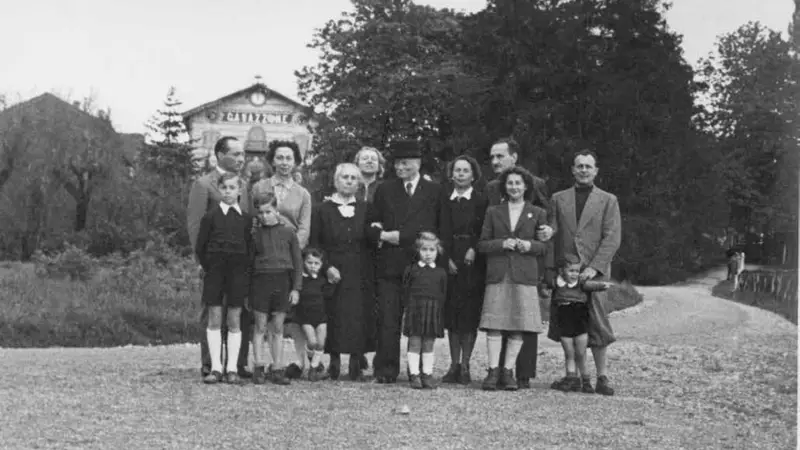
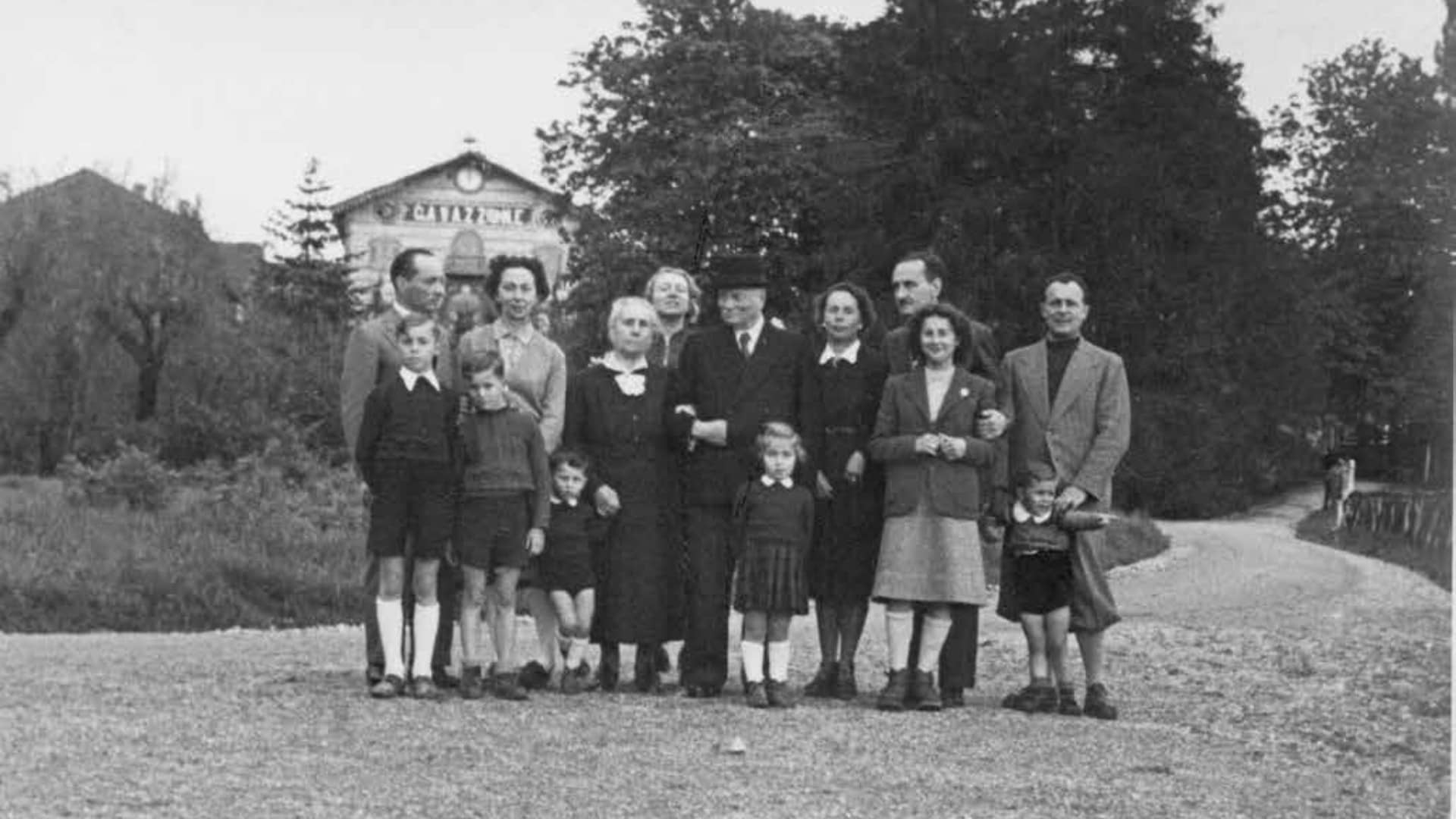
History
The history of Cavazzone from 1878 to today
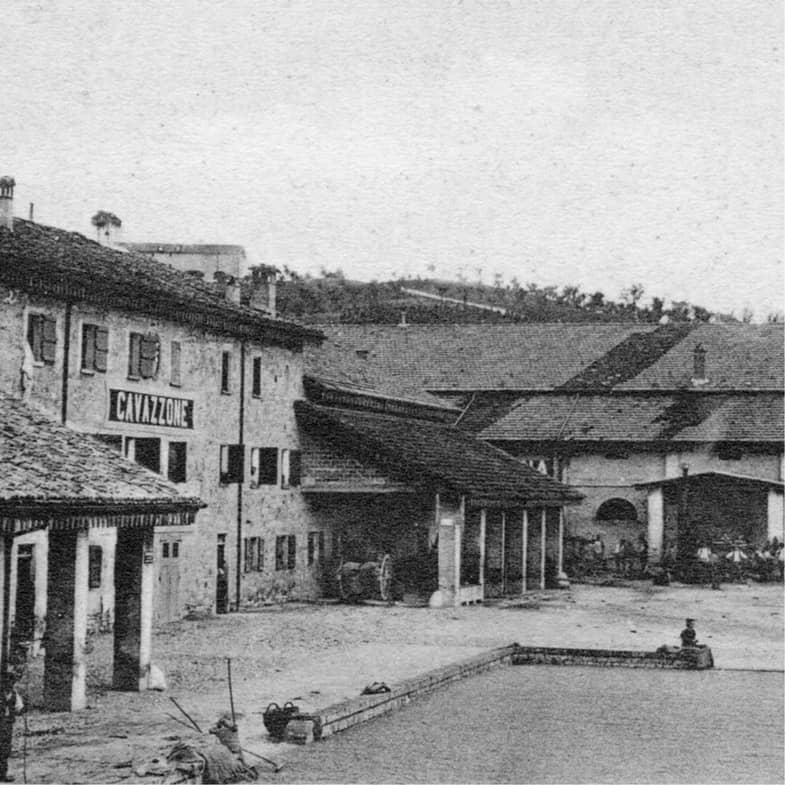
The view from Cavazzone is as moving today as it was back in 1878, when it caught the eye of Baron Raimondo Franchetti Spellbound by the beauty of the place, Franchetti soon acquired about 3,000 hectares (or 7,500 acres) of land in the areas now occupied by Cavazzone. He began major land reclamation projects, turning woodlands into pastures and agricultural land, repairing the road, and erecting the imposing court together with its many stables, farmhouses and other annexes. He also built a nursery for the children of the tenant farmers, an absolute innovation at the time. The project was entrusted to Eugenio Terrachini, who later acquired the property, in 1919.
The surrounding landscape, the gentle and wild atmosphere of the hills and the history that pervades the ancient and preserved places make up the essence of the agritourism today.
Milestones
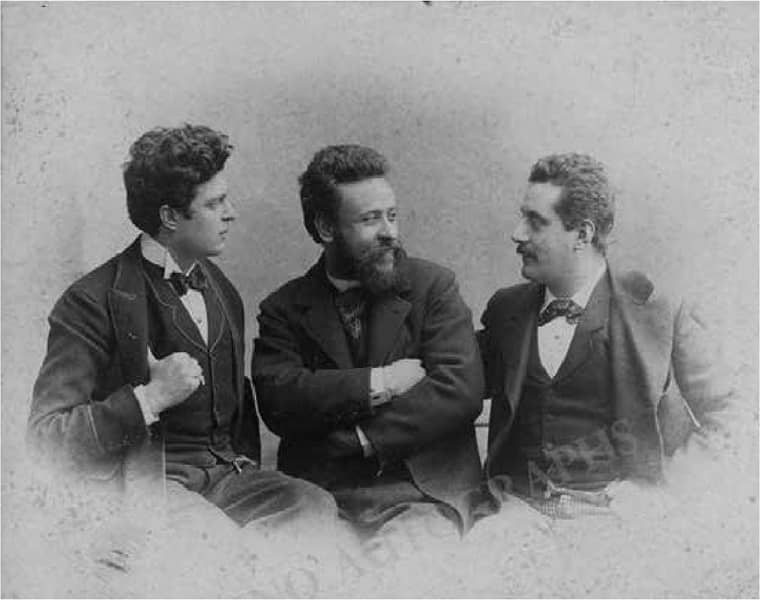
1919
Eugenio Terrachini, a prestigious local entrepreneur, acquired the central part of the estate from the heirs of Baron Franchetti. In the years between the two wars, he had the “Belvedere” – an impressive cast iron gazebo – transferred onto the property. The structure had originally been located in the park of Franchetti villa in Reggio, where the baron would sit and admire Cavazzone from afar. Thanks to Terrachini’s effort, it was spared from certain destruction, and today this oddly striking architectural gem has become one of the symbols of Reggio’s hillside.
Postwar period
Under the leadership of Eugenio’s son Paolo, the farm was progressively modernised to meet the demands of an evolving agricultural market. It was during this period that mechanised agriculture was introduced, modern farming facilities were built, and the old barn was transformed into a modern feed manufacturing plant
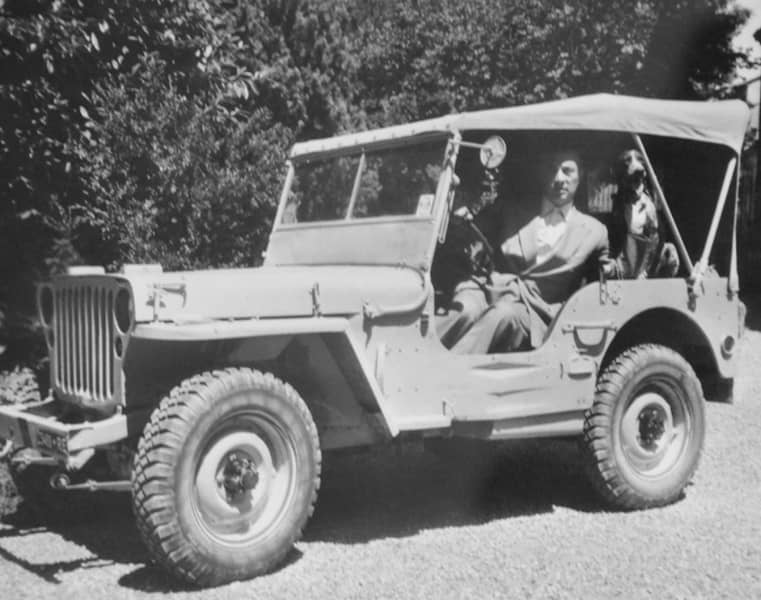
Early 2000s
At the beginning of the new millennium, a new chapter began when part of the ancient court was turned into an Agritourism facility. An old stable, with its picturesque vaulted ceilings and cast-iron columns, was transformed into a fully-equipped conference room, while another one became an elegant restaurant where guests can enjoy the ancient flavours of Reggio’s cuisine. The quaint case coloniche (farmers’ houses) were converted into rooms and suites where the timeless charm of history blends seamlessly with modern comforts and amenities. Another stable has been set up to house exhibits and events.
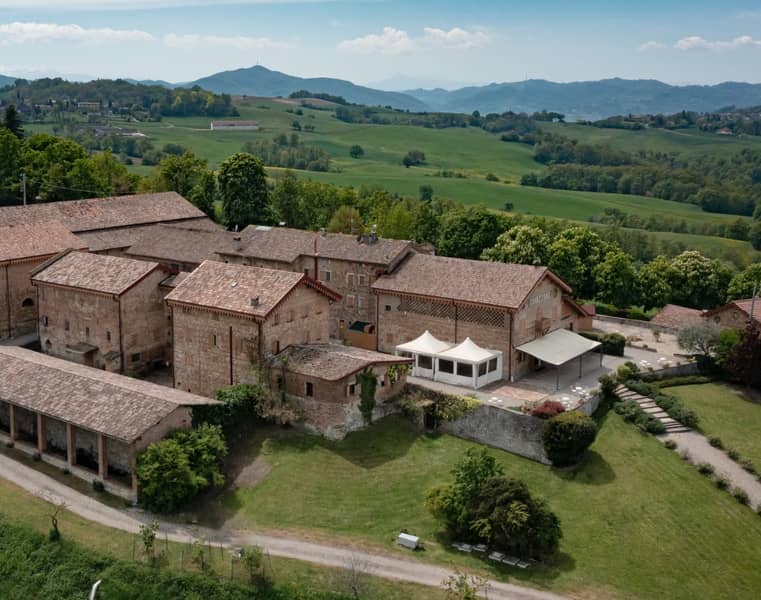
1878
Raimondo Franchetti transforms a territory that was partly covered in woods and partly uncultivated land into an Agricultural Company, complete with all services, stables, and farmhouses. For the children of the tenant farmers, he built the Company Nursery, whose project was entrusted to Eugenio Terrachini, the future owner of Cavazzone. For his wife, Sara Luisa Rothschild, he built a peculiar Nordic-style chalet, probably a copy of a pavilion of the 1878 Paris World Fair.
1880s
Around the turn of the century, Cavazzone became a sort of celebrity hangout – a gathering spot for the city’s enlightened aristocracy and for the burgeoning industrial elites. The baron’s son, musician and composer Alberto Franchetti, would stay here for months at a time while writing his operas or during their runs at Reggio’s Municipal Theatre. At Cavazzone he welcomed friends the likes of Puccini, Mascagni, Giordano, Illica and Ricordi. Among his most significant works, some directed by Toscanini or sang by Caruso, are Germania and Cristoforo Colombo. For further information https://associazionealbertofranchetti.com/. Alberto’s eldest son, Raimondo Junior, was Italy's last important explorer. In 1928 he explored the Afar Triangle. He later donated to the Reggio Emilia museum all his African findings.
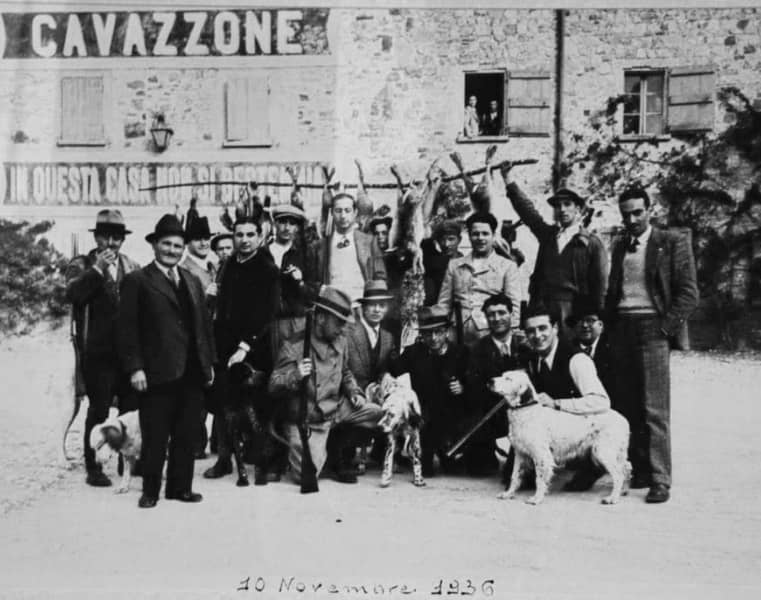
Early 1980s
Paolo Terrachini’s grandson Giovanni Sidoli took over the farm’s management. In an old hayloft he built the Acetaia, a vinegar farm, beginning with an initial set of barrels that came from the old vinegar farms of the Terrachini and Sidoli families.
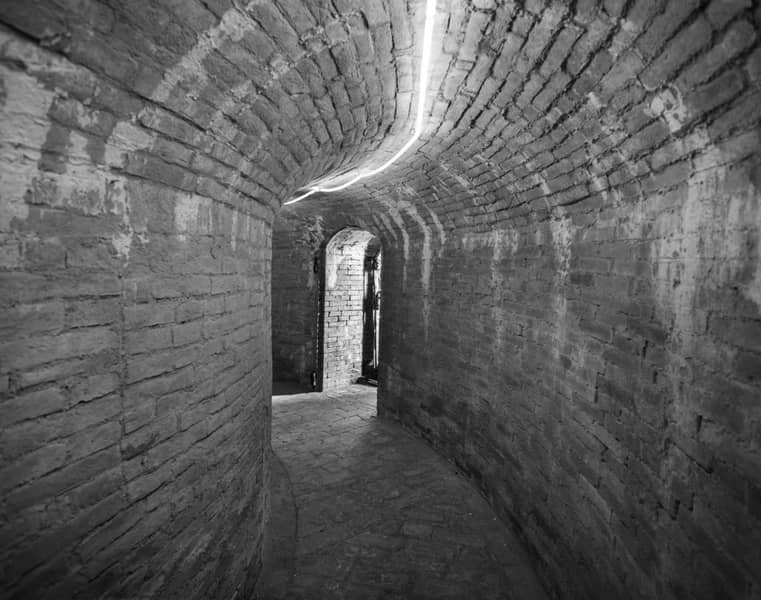
Today
Cavazzone offers its guests the opportunity to discover its origins by recreating areas dedicated to the traditional professions of the farm. This living history museum leads visitors into the farm life of yesteryear, learning the history of the production of Parmigiano-Reggiano, butter, and wine, how foods were stored in the icehouse, and other aspects of everyday life in the past. These well-preserved and jealously guarded spaces, as well as their history, are the true essence of Cavazzone.

1878
Raimondo Franchetti transforms a territory that was partly covered in woods and partly uncultivated land into an Agricultural Company, complete with all services, stables, and farmhouses. For the children of the tenant farmers, he built the Company Nursery, whose project was entrusted to Eugenio Terrachini, the future owner of Cavazzone. For his wife, Sara Luisa Rothschild, he built a peculiar Nordic-style chalet, probably a copy of a pavilion of the 1878 Paris World Fair.
1880s
Around the turn of the century, Cavazzone became a sort of celebrity hangout – a gathering spot for the city’s enlightened aristocracy and for the burgeoning industrial elites. The baron’s son, musician and composer Alberto Franchetti, would stay here for months at a time while writing his operas or during their runs at Reggio’s Municipal Theatre. At Cavazzone he welcomed friends the likes of Puccini, Mascagni, Giordano, Illica and Ricordi. Among his most significant works, some directed by Toscanini or sang by Caruso, are Germania and Cristoforo Colombo. For further information https://associazionealbertofranchetti.com/. Alberto’s eldest son, Raimondo Junior, was Italy's last important explorer. In 1928 he explored the Afar Triangle. He later donated to the Reggio Emilia museum all his African findings.
1919
Eugenio Terrachini, a prestigious local entrepreneur, acquired the central part of the estate from the heirs of Baron Franchetti. In the years between the two wars, he had the “Belvedere” – an impressive cast iron gazebo – transferred onto the property. The structure had originally been located in the park of Franchetti villa in Reggio, where the baron would sit and admire Cavazzone from afar. Thanks to Terrachini’s effort, it was spared from certain destruction, and today this oddly striking architectural gem has become one of the symbols of Reggio’s hillside.

Postwar period
Under the leadership of Eugenio’s son Paolo, the farm was progressively modernised to meet the demands of an evolving agricultural market. It was during this period that mechanised agriculture was introduced, modern farming facilities were built, and the old barn was transformed into a modern feed manufacturing plant

Early 1980s
Paolo Terrachini’s grandson Giovanni Sidoli took over the farm’s management. In an old hayloft he built the Acetaia, a vinegar farm, beginning with an initial set of barrels that came from the old vinegar farms of the Terrachini and Sidoli families.

Early 2000s
At the beginning of the new millennium, a new chapter began when part of the ancient court was turned into an Agritourism facility. An old stable, with its picturesque vaulted ceilings and cast-iron columns, was transformed into a fully-equipped conference room, while another one became an elegant restaurant where guests can enjoy the ancient flavours of Reggio’s cuisine. The quaint case coloniche (farmers’ houses) were converted into rooms and suites where the timeless charm of history blends seamlessly with modern comforts and amenities. Another stable has been set up to house exhibits and events.
Today
Cavazzone offers its guests the opportunity to discover its origins by recreating areas dedicated to the traditional professions of the farm. This living history museum leads visitors into the farm life of yesteryear, learning the history of the production of Parmigiano-Reggiano, butter, and wine, how foods were stored in the icehouse, and other aspects of everyday life in the past. These well-preserved and jealously guarded spaces, as well as their history, are the true essence of Cavazzone.



